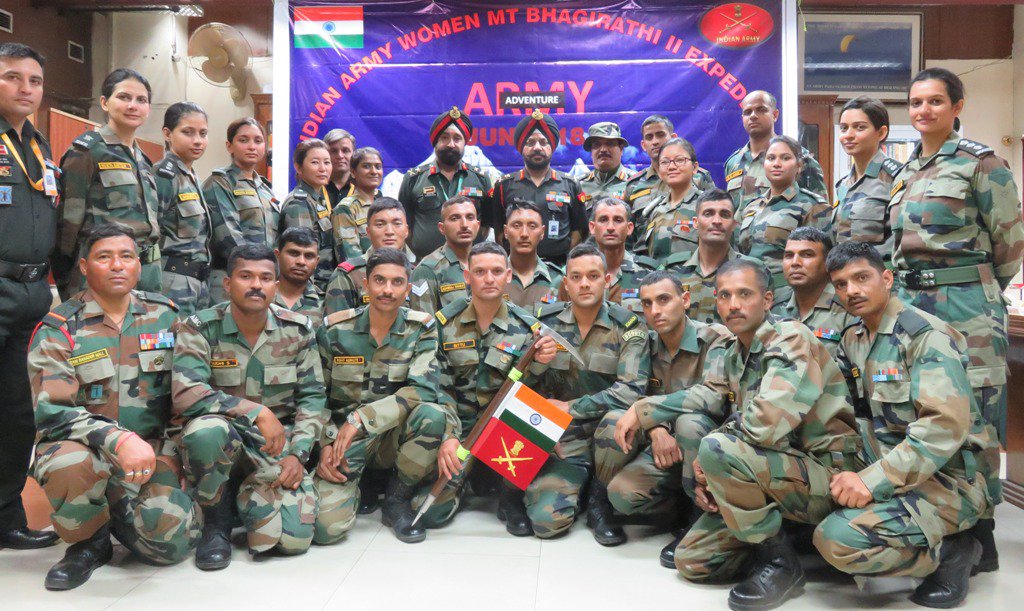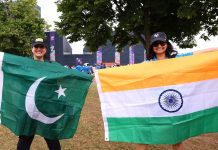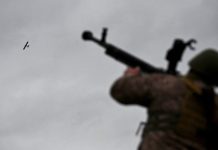By allowing permanent commission in the armed forces to women officers who were disqualified last November because of lack of fitness that the men-officers displayed, the Indian Supreme Court on March 25 has vindicated many military veterans like retired Major-General Raj Mehta.
General Mehta had been arguing: ”Stop testing women on male physical standards. They will always be found deficient. Instead, treat women as equals who are physiologically different. Calibrate women’s training and recruitment to include pre-training to make them fitter and lesser injury-prone. Seriously invest in change of male/cultural mindsets.”
India’s top court has said that the requirement that the women officers must have the same fitness standards which are mandated for 25-year-old male officers is “based on gender stereotypes and societal notions on gender roles that men are physically stronger while women are weak and submissive”.
The court verdict is bound to evoke mixed reactions from the serving and retired military personnel not only in India but also outside. The purists among them will say that while it is easy to be politically correct and talk of gender equality, on the hard battlegrounds it is the men who will prove their worth, while the women will expose their liabilities and thus put the nation’s security in danger.
The purists or the conservatives in the military often cite the best-seller, Co-ed Combat: The New Evidence that Women Shouldn’t Fight the Nation’s Wars, authored by Professor Kingsley Browne at Wayne State University Law School.
#TouchTheSkyWithGlory : Fg Offr Avani Chaturvedi became the first Indian Woman to fly a fighter aircraft solo, when on 19 Feb 18 she flew a MiG-21 Bison aircraft in her first solo flight. The photo attached has been taken after her solo sortie. pic.twitter.com/nHWe4sgSmi
— Indian Air Force (@IAF_MCC) February 22, 2018
Prof. Browne’s main points are: the unseemly rush for combat gender equality is plain rhetoric as physical strength matters. A female soldier doing half the push-ups a male does is unacceptable. Women soldiers claiming equality and promotions without combat experience is demoralizing.
Physical Fitness
The sexual hormones testosterone and estrogen compel males/females to behave differently under fire. While political correctness demands equality and fairness, this isn’t the military’s job. Their job is to win wars.
In peace, soldiers accept female leadership when warm and maternal. War, however, demands cold, ruthless leadership hinged on killing and winning. That’s paternal leadership; a skill/trait most women do not possess/display under fire.
The US Center for Military Readiness says that female soldiers have 45-50% less upper body strength and 25-30% lesser aerobic capacity. The British say only 1 in 100 trained female soldiers is physically fit for Infantry/Armour units. The female skeletal system is less dense; more prone to breakages. Aviation experts suggest that females have problems coping with increased g-forces.
Pregnancy, maternal issues, and resultant long absence; absence of trust; the bedrock of cohesion, and sexual harassment are other negativities.
Lobbies backing women’s entry into combat haven’t worked out the additional logistical, regulatory, and disciplinary costs induction will bring.

Women cannot endure the physical and physiological rigors of sustained combat operations. Allowing them to fill combat roles is a deeply flawed idea, which will impact combat effectiveness.
It is not that Indian conservatives or their global counterparts are opposed to the entry of women officers into the military as such. They are particular about the roles these women officers should play. As it is, the doors of the military were always open for women doctors and nurses for permanent services. Gradually more and more were co-opted into what are called passive roles, not active combat duty for fixed periods (short service commissions). But women have not been welcome to active combat roles.
The Pros & Cons
Major General (retd) Mrinal Suman has the following points to make in this regard:
a) Countries with secure borders and peaceful environments can accommodate more women in their militaries and assign passive duties to them. On the other hand, militaries of countries facing hostile external and internal environments are hard-pressed to find safe appointments for women.
b) Is the military technologically advanced enough to generate considerable requirements for highly skilled women for high-tech non-combat support functions? Low-tech militaries are always man-power intensive and depend on extensive physical ground effort, and hence do not lend themselves to useful employment of women.
c) Have the societal and cultural ethos reached a stage of maturity to facilitate the integration of men and women to the desired levels of mutual comfort? It has been seen that traditional societies suffer from sexual prejudices and inhibit smooth induction of women in male majority organizations. Indian society is passing through a phase of transition from traditionalism to modernity.
d) What is the degree of shortage of suitable male volunteers? Some countries have to recruit women to make up for deficiencies. The profession of arms is all about violence and brutality. Soldiers tend to acquire a streak of raw ruthlessness and coarseness. This makes the environment highly non-conducive and rough for women.
When weighed against the above parameters, General Suman thinks that women can be assigned a limited role in the Indian defense forces, particularly when India is still a second-generation technology force and has very few high-tech jobs where technically qualified women can be gainfully employed.
Lieutenant Commander Karabi Gogoi joins @IndEmbMoscow as the Assistant Naval Attache. She is a Naval Architect and the first Woman Naval Officer to be posted in an Indian mission abroad.@SpokespersonMoD @mod_russia @RusEmbIndia pic.twitter.com/a0DfJLu3mb
— SpokespersonNavy (@indiannavy) January 16, 2020
A major part of the Indian Army is deployed on combat duties in remote, inhospitable and uncongenial areas. Thus, Indian defense forces are man-power intensive needing physical ground effort. Only physically fit and tough troops can survive to deliver in India’s hostile environment, he argues.
Drawing from the Indian experience of allowing women entry into the military way back in 1992 (doctors and nurses were allowed much earlier), General Suman further points out that in the army, there is a concept of field and peace postings. Every officer looks forward to a good peace posting to be with his family and sort out family issues. But a large number of peace postings at junior and middle officers’ levels are permanently held by the women officers as they want to be with their children all the time and resent posting to field areas.
Male officers thus get deprived of their due share and are made to suffer prolonged field tenures. It has become a sore point with many. They complain that women join the forces on the plank of equality of sexes but seek special dispensation and kid-glove treatment to escape hardships.
It may be noted that the headcount of women in the Indian military has increased significantly in recent years, at times through the intervention of the judiciary. The army accounts for 6,807, the air force 1,607, and the navy 704 women officers. According to the latest available data, overall, there are 9,118 women currently serving the army, navy, and air force.
Now women officers are given ‘permanent commission’ in different branches and allowed to fly fighter planes and naval aircraft.
However, in percentage terms, women still form a small part of the military—0.56% of the army, 1.08% of the air force, and 6.5% of the navy. And what is more significant, warships, tanks, and combat positions in the infantry are still no-go zones for them.
The Global Scenario
The global examples also show a similar pattern of slow movement with regard to the women in the combat roles.
In Australia, women account for 12.8% of the forces but are prohibited from serving in direct combat positions. In Canada, women have commanded infantry units and warships and some combat fatalities but ground combat roles are out.
French and German women are not allowed in ground combat roles of their respective forces. Pakistan has a few women fighter pilots but close combat roles and ships/ submarines are prohibited. Russia prohibits its women forces in close combat roles.
However, a happy General Mehta points out how the US and the UK have now decided to allow women in combat roles. Women officially became eligible for combat positions in the American military in 2013.
The UK military lifted a ban on women serving in close combat ground roles only in 2018. He considers it positive that Norway, Denmark, Australia, Spain, and Canada have now accepted women as conventional/nuclear-powered submariners regardless of the costs of bunking rising from $4000 (men) to $300,000 (women).
Follow EurAsian Times on Google News




